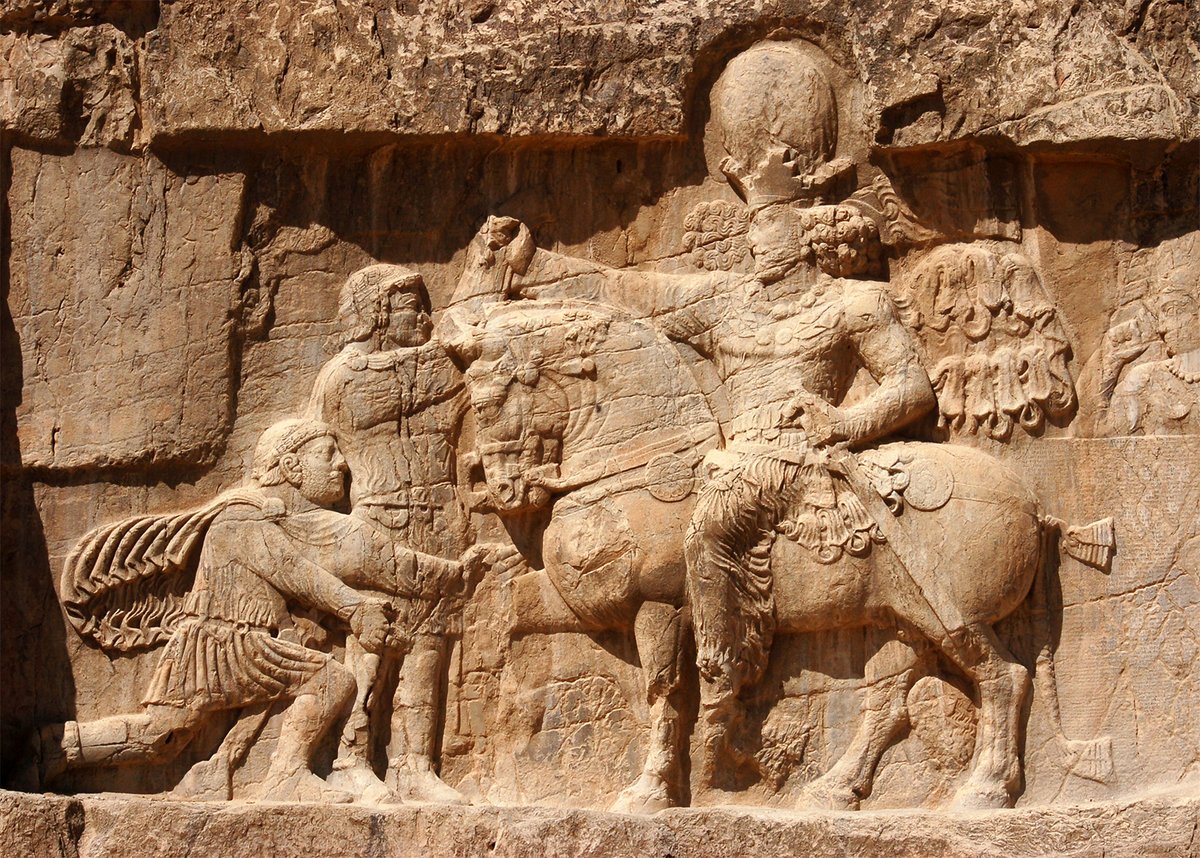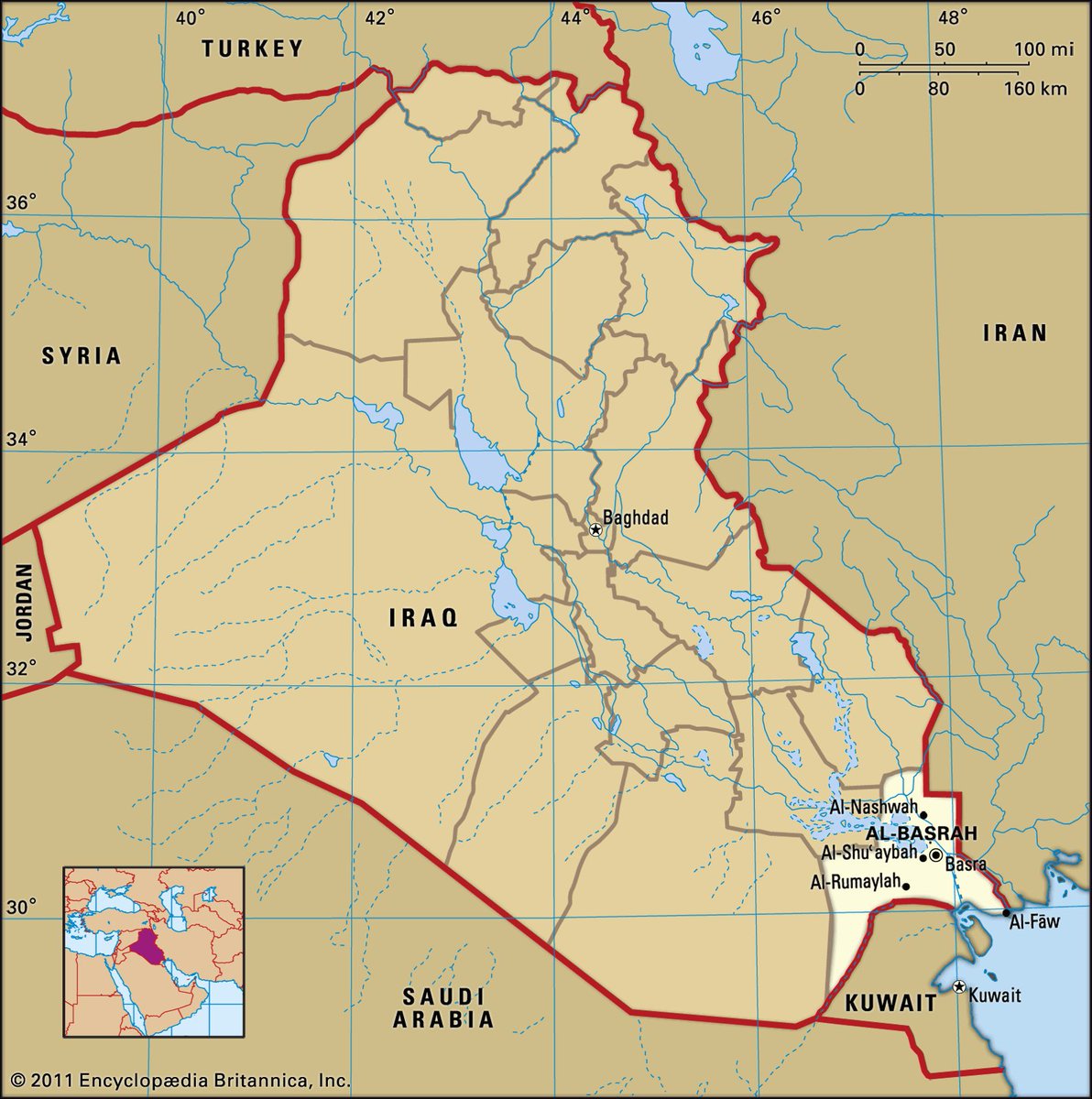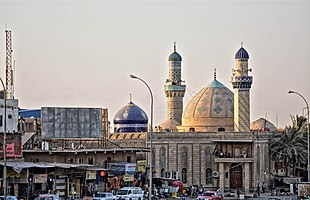1/ What happened to the descendants of the Sasanian cavalry (known as the Asāwira) who went over to the Arabs during the conquest of Iraq?
A thread on how Sasanian soldiers transformed into Muslim theologians over the course of several generations
A thread on how Sasanian soldiers transformed into Muslim theologians over the course of several generations
2/ The Asāwira are a famous example of pre-Islamic elites who switched sides during the conquest and were richly rewarded for their loyalty.
They settled mainly in the city of Basra in southern Iraq, where they lived under the patronage of the powerful Arab tribe of Tamīm
They settled mainly in the city of Basra in southern Iraq, where they lived under the patronage of the powerful Arab tribe of Tamīm
3/ The sources report that they had their own quarter in Basra, including their own mosque. They also received the very highest military pension (the ʿaṭāʾ): 2,000 dirhams per year
4/ During the late-7th/ early 8th-c., the Asāwira found themselves on the losing side of several intra-Muslim conflicts, supporting the Zubayrids during the second civil war and Ibn al-Ashʿath during his rebellion
5/ As a result, the Umayyad governor of Iraq al-Ḥajjāj ibn Yūsuf destroyed their homes and cancelled their pensions.
Still, descendants of the Asāwira (known by the nisba "al-Uswārī") continued to pop up in Basra throughout the early ʿAbbasid period.
Still, descendants of the Asāwira (known by the nisba "al-Uswārī") continued to pop up in Basra throughout the early ʿAbbasid period.
6/ One was Mūsā ibn Sayyār al-Uswārī, a pupil of the famous al-Ḥasan al-Baṣrī. He was a preacher and Quran reciter. Arabs and Persians both reportedly attended his lectures. He would have them sit apart, teaching them in their own language
7/ Another was ʿAmr ibn Fāʾid al-Uswārī, a preacher and Quranic exegete. He was a Qadarī in matters of theology, meaning he believed that man had the capacity for free will. He was also a companion of several high-ranking ʿAbbasids in Basra
8/ Uswārīs from Basra also became prominent Muʿtazilīs, the famous rationalist theologians of the early Islamic period: Ṣāliḥ ibn ʿAmr al-Uswārī (perhaps son of the aforementioned ʿAmr ibn Fāʾid) and ʿAlī ibn Khālid al-Uswārī (a pupil of the famous Naẓẓām)
9/ It& #39;s often hard to trace the ancestry of non-Muslim groups who converted and entered Islamic society during the early period. Part of the reason is that so many converts, especially non-Arabs, were slaves.
10/ The Asāwira are a nice counter-example. Because of their prestige, they retained a sense of their old identity as Sasanian soldiers. They are a nice example of how cultural capital passed between generations and religions at this crucial time of transition
11/ For an overview of the Asāwira, see this article from Encyclopaedia Iranica:
http://www.iranicaonline.org/articles/asawera-arabic-broken-plural-form-the-variant-asawirat-also-occurs-in-yaqubi-p">https://www.iranicaonline.org/articles/...
http://www.iranicaonline.org/articles/asawera-arabic-broken-plural-form-the-variant-asawirat-also-occurs-in-yaqubi-p">https://www.iranicaonline.org/articles/...
12/ For more on the Uswārī scholars of Basra, see Van Ess, Theology and Society, Vol. 2, 91-98
13/ At the top, an image of the Sasanian king Shapur I (r. 240-270) on horseback at Naqsh-i Rustam; a map of Iran with Basra province in the south; and a modern view of Basra city

 Read on Twitter
Read on Twitter




